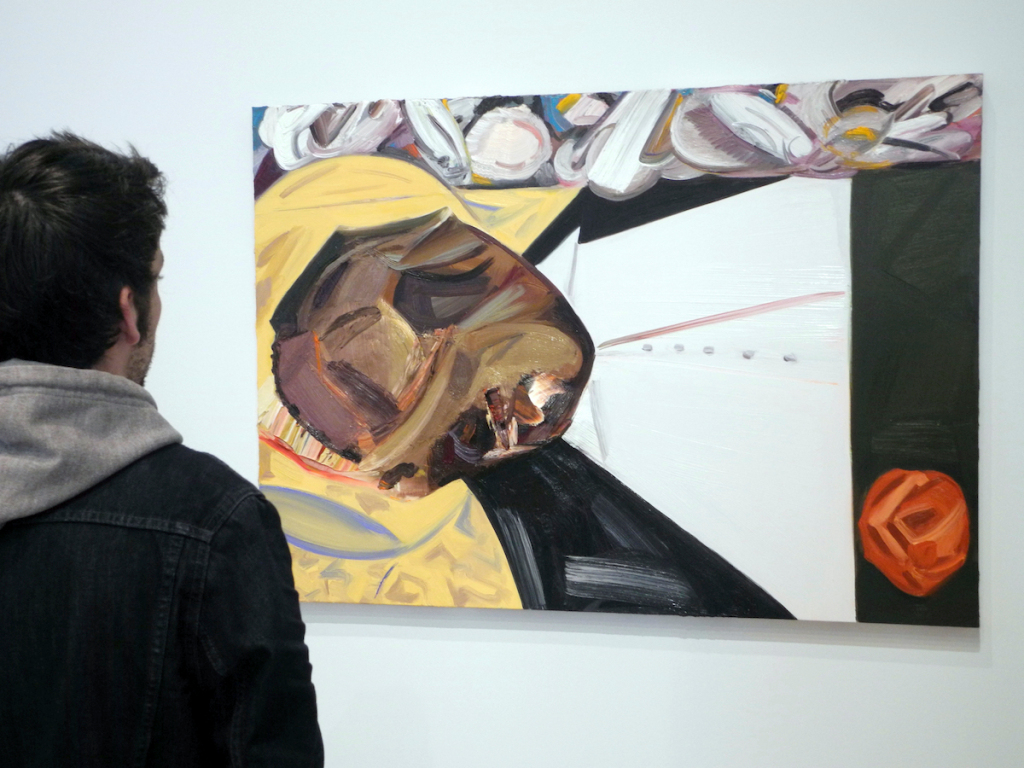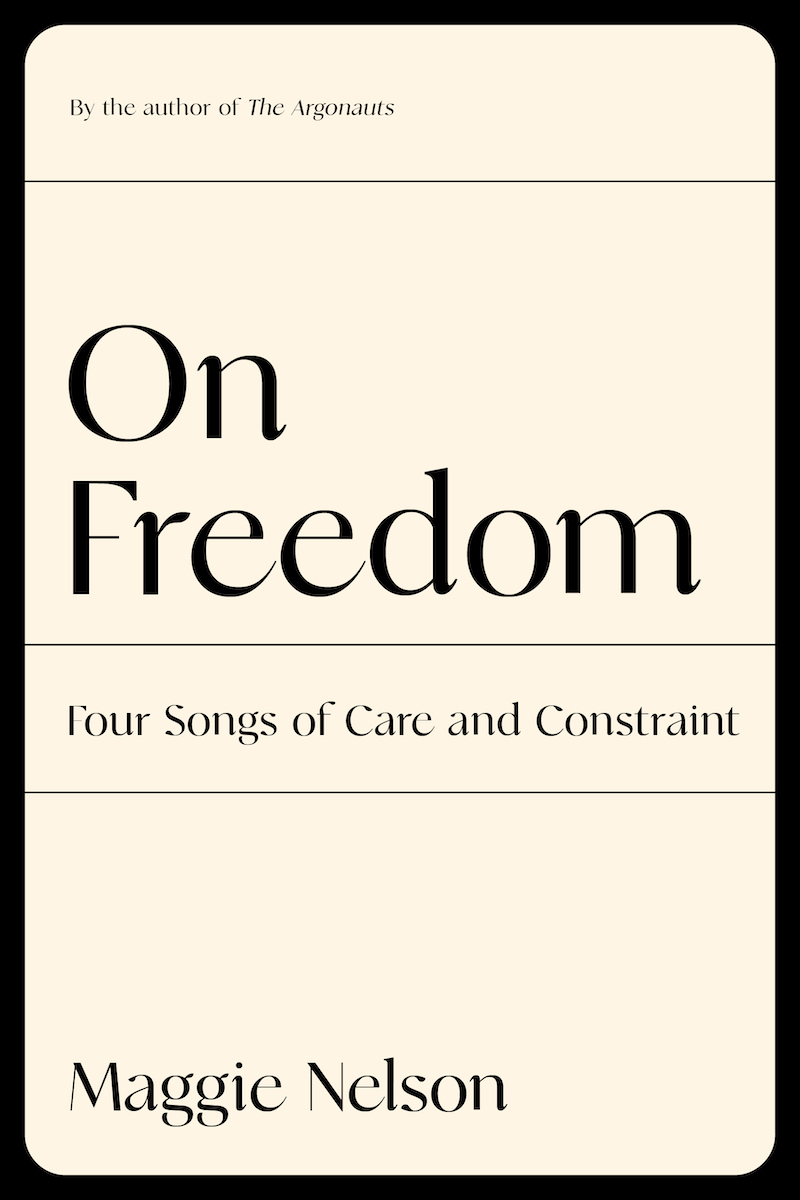 View of Dana Schutz’s painting Open Casket in the 2017 Whitney Biennial. Johannes Schmitt-Tegge/picture-alliance/dpa/AP Images
View of Dana Schutz’s painting Open Casket in the 2017 Whitney Biennial. Johannes Schmitt-Tegge/picture-alliance/dpa/AP Images
In 1969, the historian Theodore Roszak described two paths for the Left. The counterculture (his coinage) faced a choice between psychic and material liberation. Does the struggle for freedom begin in the mind: fighting repression, awakening forbidden desires, experimenting with Zen and psychedelics? Or must it begin in the concrete, economic realm: lobbying for welfare and equal wages, burning draft cards, boycotting businesses? In hindsight, it’s remarkable how casually Roszak assumes that some liberation—from capitalism, consumerism, racism, sexism—is possible, and how many other ’60s thinkers were ready to assume the same.
Whether or not they were right, their readiness helped narrow the gender gap, decriminalize queer sex, and end censorship and the draft. Despite these rather large achievements, conventional wisdom maintains that the counterculture “failed” because it fell short of its utopian aims. In the last fifty years, the intelligentsia has sobered up and declared liberation a fairy tale. For T. J. Clark, “a Left with no future” (i.e., ours) must embrace pessimism and forget its old, quixotic goals of ending capitalism. Other thinkers have wondered if such goals would be worth all the trouble even if they were attainable—“liberation,” Foucault wrote, “paves the way for new power relationships.” Maggie Nelson agrees with Foucault’s claim wholeheartedly; it is, she writes, “a guiding principle” of her new book, On Freedom: Four Songs of Care and Constraint. “No doubt,” she allows, “it will strike some as a giant buzzkill.”
If the culture industry of the early 2020s vanished overnight, you could rebuild it brick for brick with this eloquent, perplexing book as a blueprint. An entire “discourse,” to crib from Foucault again, has been packed into 200-odd pages: identity and affect, Berlant and Butler, climate change and Eileen Myles and Fred Moten and #MeToo. Nelson has set herself a task both impossibly ambitious and curiously low-stakes: show how this discourse might foster a certain kind of freedom in the realms of art, sex, drugs, and environmentalism—one realm per “song.” I can imagine aliens studying On Freedom eons from now, puzzling over our sad, skittish species. Why did everyone argue about Dana Schutz’s work for two months and then move on to the next thing? Why did James Baldwin become the leading Anglophone intellectual a quarter-century after his death? And why, with a sense of impending apocalypse in the air, were so many of the most educated, respected Homo sapiens so doubtful—scornful, even—about doing anything to stop it?
Too realistic for its own good, the twenty-first-century Left faces the same choice between the material and the psychic as Roszak’s counterculture. It’s just that the trendiest thought leaders no longer seem to believe either option leads anywhere that exciting. Or at least Nelson doesn’t: “On Freedom,” she writes, “will not argue that mindful breathing will immediately deliver us social equity and justice, or reverse the course of global warming.” Roger that. “But it will propose that, if we want to divest from the habits of paranoia, despair, and policing that have come to menace and control even the most well intentioned among us—habits that, when continuously indulged, shape what’s possible in both our present and future—we are going to need methods by which we feel and know that other ways of being are possible, not just in some revolutionary future that may never come, or in some idealized past that likely never existed or is irretrievably lost, but right here and now.”
 On Freedom: Four Songs of Care and Constraint by Maggie Nelson, Graywolf Press, 2021; 288 pages, $27 hardcover.
On Freedom: Four Songs of Care and Constraint by Maggie Nelson, Graywolf Press, 2021; 288 pages, $27 hardcover.
Nelson favors the psychic over the material; she’s more interested in divesting from paranoia than from fossil fuels. Yet even this metaphorical divestment no longer aspires to change the world. The goal, instead, is “the development of more understated practices by which one develops a greater tolerance for indeterminacy, as well as for the joys and pains of our inescapable relation.” Borrowing from the late anarchist David Graeber, Nelson suggests that the idea of all this understatement is to learn to act as if one is already free. I’m reminded more strongly of the docile, decorous neoliberal freedom Graeber condemned in the following Orwellian terms: “the best we can hope for is to adjust the size of the boot that will be stomping on our faces, forever, or perhaps to wrangle a bit more wiggle room in which some of us can at least temporarily duck out of its way.” And consider the key words of Nelson’s argument: tolerance, inescapable, pains. Tolerating problems is usually easier than trying to change them—and, as a certain Trump-era meme has it, some people would rather sit in a burning house and smile and say “This is fine” than run out the door, screaming.
No one-and-done liberation for Nelson, in any case—just an “unending present practice” of . . . what, exactly? At various times, she calls the practice “indeterminacy,” “epistemological uncertainty,” “ambivalence,” “nuance,” “heterogeneity,” and, taking her cues from the queer theorist Eve Sedgwick, “weak theory.” No single term prevails, which is the point—in rhetoric and thought both, misty open-endedness may succeed when hard, clanging ideology has failed. An unshowily brilliant stylist, Nelson is a delight to read whether you agree with her or not. She is also savvily ambivalent about her own arguments: On Freedom, she writes, isn’t a manifesto but a “wager.”
One reason I’m ambivalent about Nelson’s ambivalent embrace of ambivalence is that it reminds me of what we have already, which doesn’t strike me as especially good. Much of this book’s first and longest section, “Art Song,” consists of a discussion of the Dana Schutz Whitney Biennial controversy—a bold choice, since presumably a lot of people who’d buy the new Maggie Nelson book would be glad never to read the words “Dana Schutz Whitney Biennial controversy” again.
Nelson has surprisingly little to write about Open Casket, Schutz’s flashy but ultimately pretty forgettable painting of Emmett Till, that hasn’t already been written or said or Tweeted or Sharpied on a picket sign. On any given page you can find her thoughtfully swaying from one point about free speech to another. It’s true, she accepts, that the painting is tone-deaf on the subject of violence against Black Americans. At the same time, one can accept this without also believing that the painting needs to be destroyed. At the same time, one should be sensitive to the argument that Open Casket is hurtful to some viewers, and, by the same token, that there’s a lot we still don’t know about the psychological effects of art protected by freedom of speech. At the same time, it’s important to be leery of crudely utilitarian arguments for the value of art.
I agree with all of this. So do most people I know who care about art. Judging from Twitter and the Times, the brouhaha over Open Casket was a polarized, unnuanced nightmare in which both sides felt certain their opponents were Nazis. But online isn’t reality, and for every pundit with a hot take there were a dozen casual observers who felt strongly both ways—of course the painting was outrageous, and of course it shouldn’t be destroyed. There’s enough room for the same person to applaud free speech and groan at the Milo Yiannopoulos–types who use free speech as a cover for tenth-rate provocation. The discourse may be black-and-white, but (as Ezra Klein has argued) people are grayer than ever. Strange, then, that Nelson thinks that grayness might be the answer—that we can cogitate our ways to freedom by wading one more time through the art-world scandals that increasingly overshadow art itself.
Art that can be reduced to a single message, no matter how virtuous, is no art at all, and art criticism that insists on such reductions counts as real criticism about as much as vegan cheese counts as real cheese. Nearly a century after William Empson identified seven types of ambiguity, there are plenty of critics who won’t allow art a single one. Nelson should by all means celebrate aesthetic ambiguity, then—there aren’t many things worthier of celebration. Yet the kind of ambiguity she describes seems cramped and miserly, even miserable at times. There is plenty of art in “Art Song,” but I’m unsure if Nelson likes any of it, unless you count Kara Walker’s work, about which she writes, “it offers magic—magic hard to come by elsewhere, and which can make life feel more worth living. To those who would scoff at such a characterization as sentimental enchantment, or who have come to see art as just as another bankrupt concept . . . I offer no rebuttal, save a reminder that it can be other things, too.”
Other things, too. Nelson seems a little afraid to rhapsodize over art, so on the rare occasions when she does, the results are terse or clichéd or both, as if she’s worried she’ll lapse into the naïve, transcendent freedom her book distrusts. The result is that On Freedom is unlikely to convert anyone not already on board with her basic points—she’s preaching to a tasteful little choir of MFAs trained to curb their enthusiasm and indifferent to the possibility of liberation because they have no particular need for it. Which does, I am happy to admit, strike me as a giant buzzkill.
Source link : https://www.artnews.com/art-in-america/aia-reviews/maggie-nelson-on-freedom-essays-1234603306












